
What is end-to-end analytics and why is it important for business
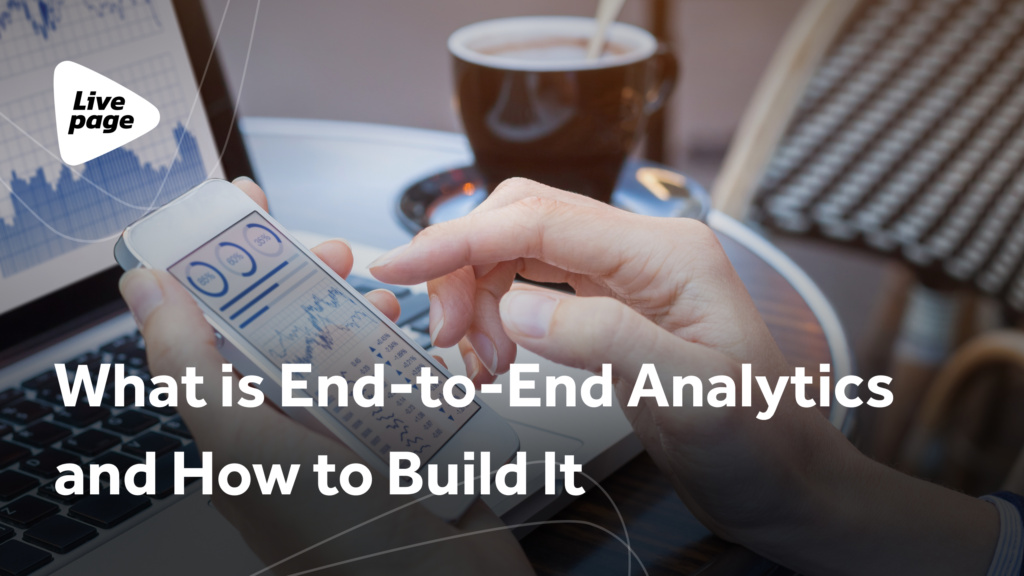
One of the important questions in business is how to attract a client and spend the minimum budget at the same time. You need to understand which channels and methods of attracting customers work best to get the answer. And somehow you also need to measure the return on investment in marketing.
End-to-end analytics help business owners and marketers better understand all customer journeys and see which channels and content are really influencing users to become leads and eventually customers.
What is end-to-end analytics?
End-to-end analytics is a method of analyzing the effectiveness of marketing strategies that can be used to trace the entire user journey from the first click to MQL, SQL lead, or customer.
If you have even a few sales per month, it becomes really difficult to track every interaction of these users with your website and understand where they came from.
Proper tracking lets you know if your marketing campaigns are working. To achieve this level of insight, businesses often rely on comprehensive end-to-end analytics solutions that integrate data across all marketing and sales platforms.
You can get out any assumptions of your reporting and use real data to track performance and make insight-based decisions. And in order to collect data, you first need to set up a CRM system.
CRM system types
One of the pillars of end-to-end analytics is the CRM system, because it contains and stores information about the lead who has already sent an application, and it is the CRM system that documents further relations with potential customers.
It is clear that each type of business needs its own CRM system solution: you cannot compare IT with Ecommerce business, SaaS with Local, because it is business processes that play an important role in the selection of CRM.
Let’s look at some interesting CRM options for different types of businesses
Pipedrive
Easy and convenient system, suitable for product, service IT companies and startups, convenient drag-and-drop interface.
Zoho
A comprehensive CRM and ERP system can automate almost any business process. A wide range of tools to choose from for small, medium and large businesses of any direction.
Hubspot
It suits Saas companies and online services, B2B companies, FinTech companies, IT companies. It has a sufficiently rich functionality in the free version.
Keepincrm
The system is suitable for organizing the work of local businesses and online stores. Cloud version only. It has integrations with delivery services, IP telephony, banks, marketplaces, and other services for entrepreneurs.
Asteril
Great for Ecommerce projects, has all the necessary integrations for online trading. Ability to collect applications from various marketplaces, set up integration with chatbots, telephony, mail, etc.
End-to-end analytics setup process
If we consider end-to-end analytics from the technical side, it is essentially the integration of website analytics and the CRM system. This article will describe the integration using Google BigQuery, a cloud database with visualization in Google Data Studio.

If you’re specifically interested in data analytics and visualization services, our team is here to help you turn complex data into clear, actionable insights.
When it comes to the implementation of end-to-end analytics, it is immediately important to answer several questions:
- Is there a clearly structured business process in the company’s CRM system? So that immediately after setting up the integration, you don’t have to redo the settings twice.
- Does Sales follow clear instructions for “driving leads” through funnels in CRM? So that the information in the reports is as up-to-date as possible for each lead/client
- Is it possible to involve a developer who will help set up the transfer of the necessary fields from the website to the CRM, as well as the streaming of all the necessary parameters from the CRM to the cloud base.
After we have positive answers to all these questions, we can start selecting the metrics we will focus on.
According to the generally accepted classification, the types of leads are divided into the following:
- MQL (marketing qualified lead) – a lead that has shown interest in the company and its products, its request is relevant, but it is not yet clear whether it is ready to make a purchase and whether it has the appropriate budget.
- SQL (Sales Qualified Lead) – a lead that is ready to make a purchase, but to make a final decision, a number of questions must be closed. We are not talking about a prospective, but about a potential client.
But each company may have its own definition of MQL, SQL, and that’s okay. Depending on the niche and sphere of influence, these definitions can have their own interpretations. In order to improve the marketing strategy, it is important to determine the characteristic of the lead, which should be the criterion that this or that marketing activity worked effectively. These characteristics can be MQL, SQL, or Client.
Of course, ideally the main criterion of effectiveness should be the Client, but you also need to consider the length of the sales cycle in your niche business. That is why MQL and SQL metrics are used to obtain operational statistics.

End-to-end analytics is designed to show exactly where those dream leads are.
Therefore, the next step is to combine relevant information about users from the website (Google Analytics 4) and leads (CRM) in Google BigQuery. There are two options for this:
- Connect a paid service that offers ready-made integration, such as Zapier. To begin with, the Starter tariff is enough. Suitable if there are problems with programming. It’s pretty easy to set up streaming in Zapier’s interface.
- Engage a developer who will set up data transfer from CRM to BigQuery via API. In Livepage we usually provide technical tasks for this type of task.
Curious to see what the end result will look like? With all the data, we can build quite different custom reports, including providing customer journey analytics services. For example, at Livepage, we build reports not only for clients, but also have our own reports for tracking the results of marketing activities.
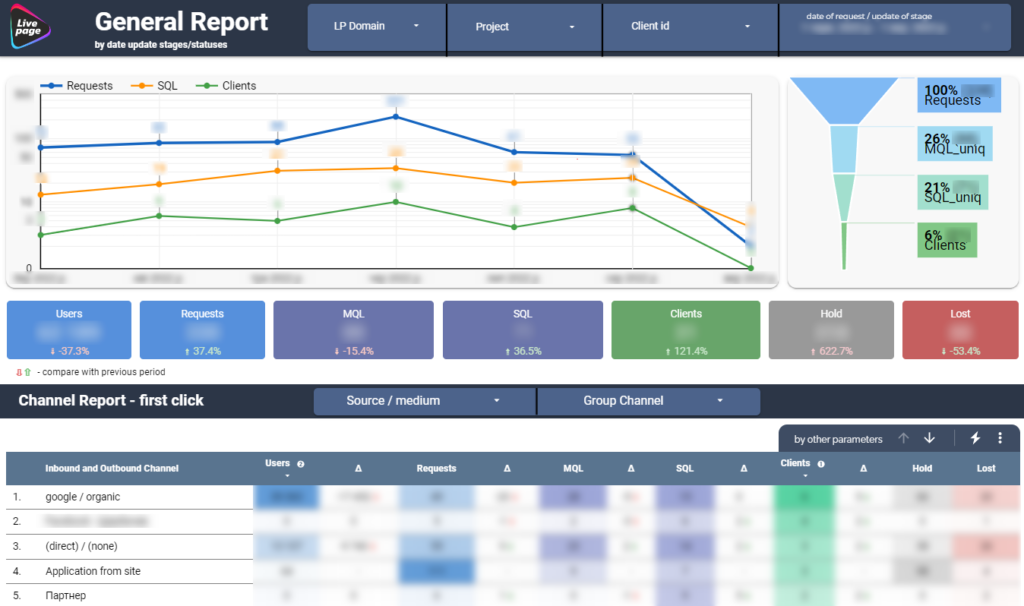
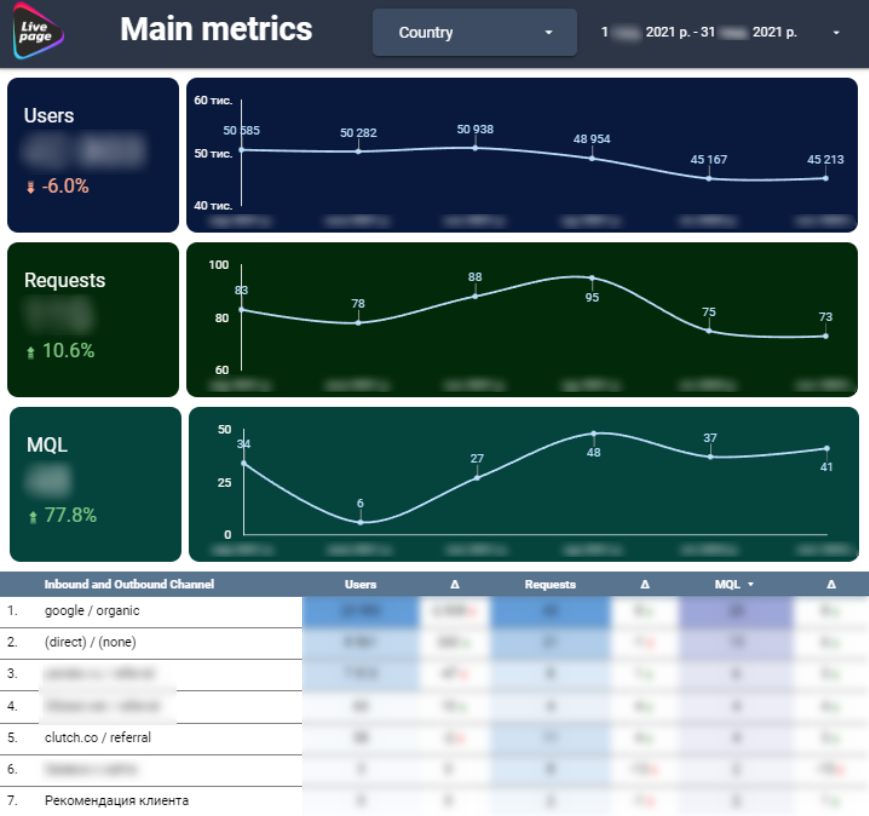
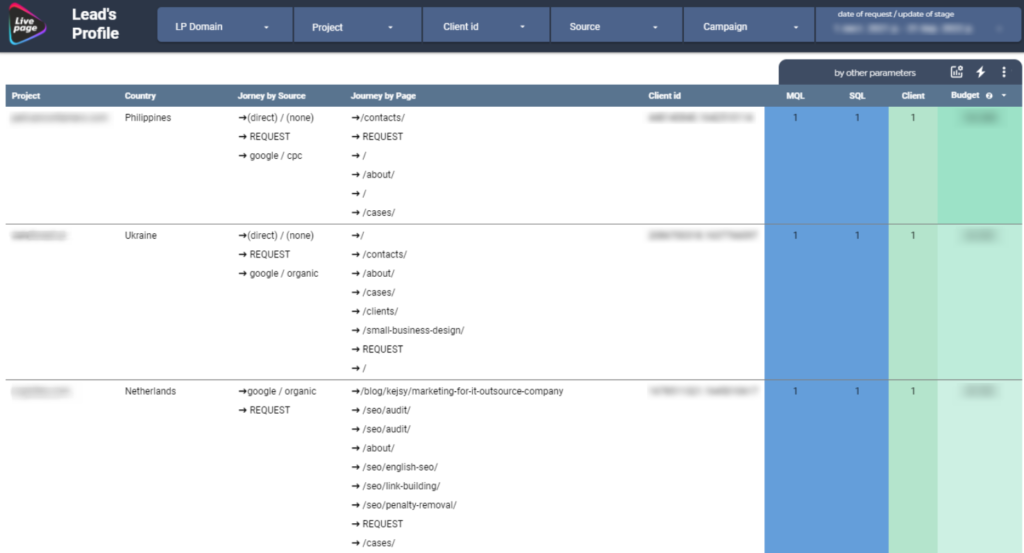
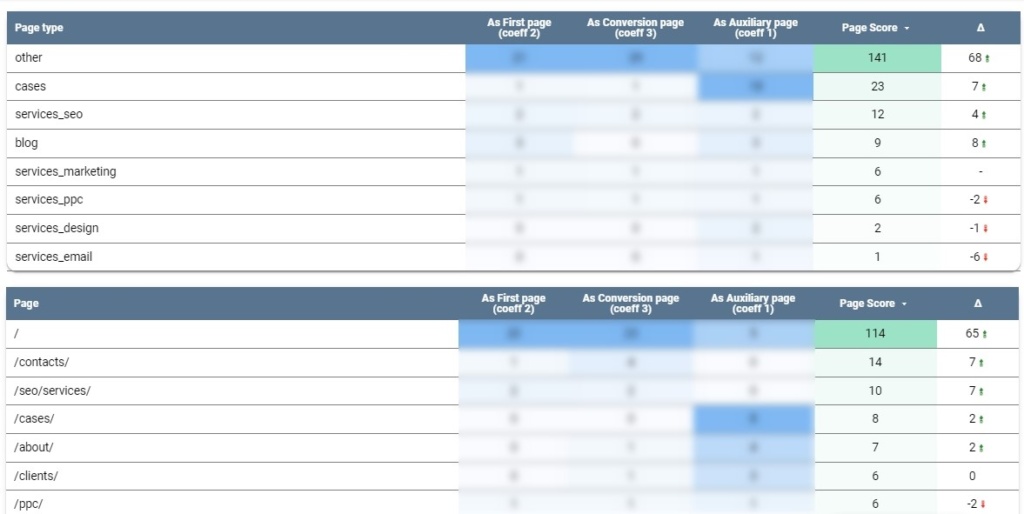
Now that you know which channels and pages can turn a user into a potential lead, and which content generates more spam traffic, business leaders and marketers can experience an “Ah-ha!” moment. Or, in other words, an insight that will lead to changes in marketing strategy and ultimately increase the number of customers.

Conclusions
As a result, thanks to end-to-end analytics set up, we get:
- Data for a more considered assessment of the profitability of the marketing activities.
- Understanding which traffic channels and content are really effective. This is to be sure which exact channels need to be scaled.
At Livepage, we provide the service of setting up end-to-end analytics and creating dashboards, in which we take into account the peculiarities of each business and the individual needs of customers. Contact us – we will be happy to help.



















